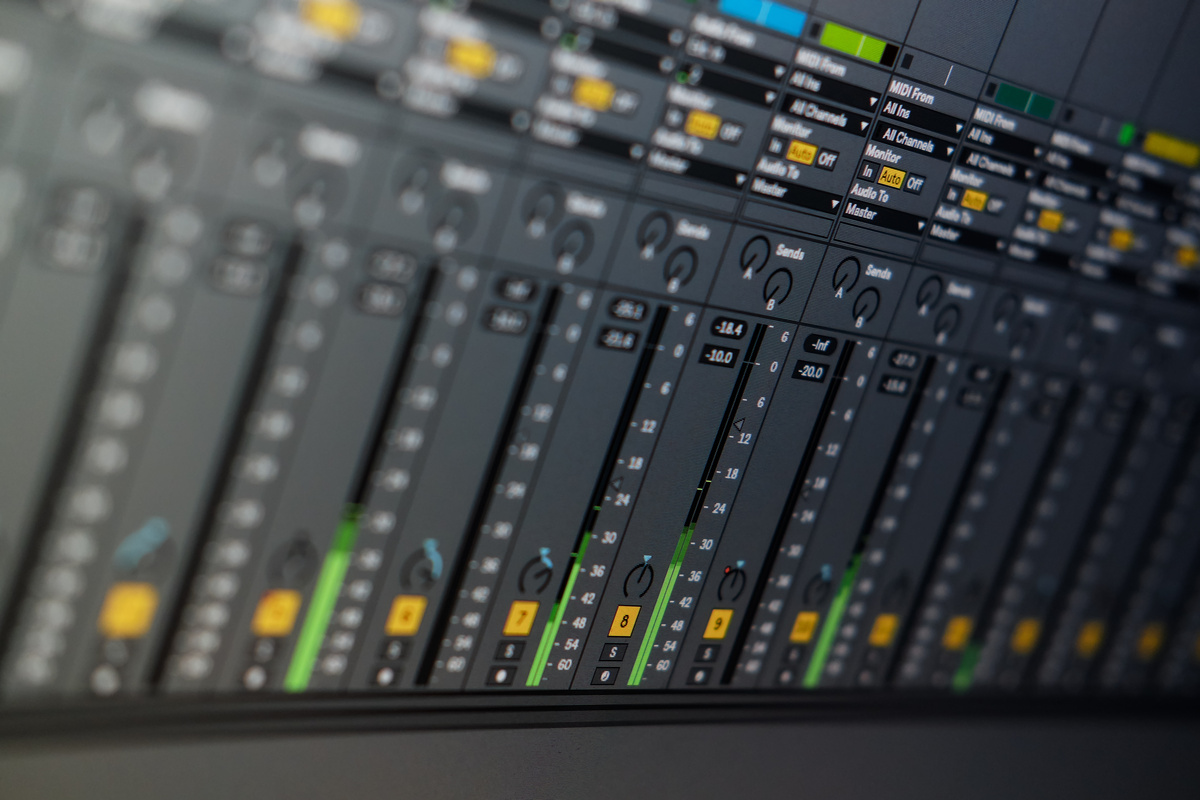

Beat Shaper's generative output integrates directly with Ableton Live
Beat Shaper is an AI-powered tool for generating musical sequences, such as drum patterns, basslines, and synth melodies, designed for use in electronic music production. It creates exportable MIDI and audio loops that are custom-generated for each user input. These loops can be used in any digital audio workstation (DAW). Producers can use Beat Shaper to quickly generate ideas, then continue composing with them in their preferred production environment.
For producers working in Ableton Live, Beat Shaper additionally provides a downloadable synthesizer patch used to play back and render generated synthesizer melodies and basslines. A synthesizer patch is a saved configuration of all the parameter settings that define the sound of a synth, such as oscillator shapes, filter settings, envelopes, and modulation sources. Beat Shaper's internal synthesis engine is roughly compatible with the Ableton Drift synthesizer, meaning that patches made on one can be used by the other. Due to differences in their exact implementations, Ableton Drift and Beat Shaper's synthesizer sound slightly different but their overall tonal characteristics are rough approximations of each other.
MIDI and audio files exported from Beat Shaper are compatible with all widely used DAWs, such as Cubase, FL Studio, Logic, and all versions of Ableton Live. This includes Live Lite, Intro, Standard, and Suite, across all releases. For synthesizer patches, compatibility depends on the Ableton Drift device, which was introduced in Live 11.3 and is available in all editions starting from that version. Users working with earlier versions of Live can still use all generated MIDI and audio content, but Drift patches require Live 11.3 or later.
After generation in Beat Shaper, exported files must first be downloaded to the local system. All downloadable files can be accessed via the "Export to DAW" button in the lower left of the Beat Shaper user interface. Once downloaded, these files can then be dragged from the file explorer into an Ableton Live project. Direct drag-and-drop from a web browser or from the Beat Shaper interface itself is not supported. This applies to all exportable file types: MIDI, audio, and Drift patches.
Because Beat Shaper exports standard MIDI and Drift-compatible presets, all generated content remains fully editable in Ableton Live. Users can make detailed changes to note timing, pitch, velocity, or modulation within Live's MIDI editor, and further refine the sound design using Drift's built-in parameters. This supports a flexible workflow in which producers use AI generation as a creative starting point and continue developing their tracks entirely within Ableton.
Typically, users that work both in Ableton and Beat Shaper generate and iterate on ideas in Beat Shaper first and export and refine them in Ableton afterwards. The steps are generally as follows:
The user begins by entering a prompt into Beat Shaper: "a dark minimal techno loop, Berlin techno like something they play in Berghain." Beat Shaper responds by generating a bassline melody, configuring a synthesizer patch to play it, writing a matching drum beat, and selecting an appropriate drum kit and tempo. The output includes a cohesive two-bar loop designed to reflect the character described in the prompt.
The user previews and refines the sequence in Beat Shaper until they decide they want to use it in a track they're working on. They use the "Export to DAW" function to download three separate files: the bassline MIDI, the drum beat MIDI, and the synthesizer patch file formatted for Ableton Drift.
The user drags and drops the bassline MIDI file onto an empty MIDI track in Ableton Live that they'll use for their bass track, which creates a new MIDI clip. They repeat the process for the drum beat, placing the second MIDI file onto a separate track for drums. These MIDI clips now appear as editable regions in the Live arrangement and session views.
Next, the user drags the Drift patch file onto the bass track. Ableton Live instantiates a new Drift device, automatically loading it with the exact same patch used during generation in Beat Shaper. While minor tonal differences exist between Beat Shaper's synthesis engine and Ableton Drift, the patch sounds nearly identical and retains the intended timbre and modulation behavior.
With the generated material now in place, the user begins customizing it to fit the rest of their project. They can adjust parameters in the Drift synth, for example, lowering the filter cutoff to avoid overlapping frequencies with other mid-range synths they're using for other parts of the track. They can edit MIDI notes and velocities in the piano roll, add effects like EQ or saturation to the bassline, and swap out the drum kit with their own samples while retaining the rhythm generated by Beat Shaper.
This workflow highlights how Beat Shaper can serve as a starting point for creative exploration. The generated sequences provide structure and inspiration, while full compatibility with Ableton Live ensures that users can personalize every detail of the result, shaping the output into something uniquely their own.
Beat Shaper plans to expand its integration with Ableton Live as the platform evolves. Once support for full-song generation is available, users will be able to download complete Ableton Live Project files with pre-arranged tracks. In addition, a dedicated DAW plugin is planned for release in 2026, allowing Beat Shaper to run directly inside Ableton and other major DAWs. This will enable real-time generation and editing without leaving the production environment.
Ableton and Live are trademarks of Ableton AG.
Enhance creativity and break through creative blocks